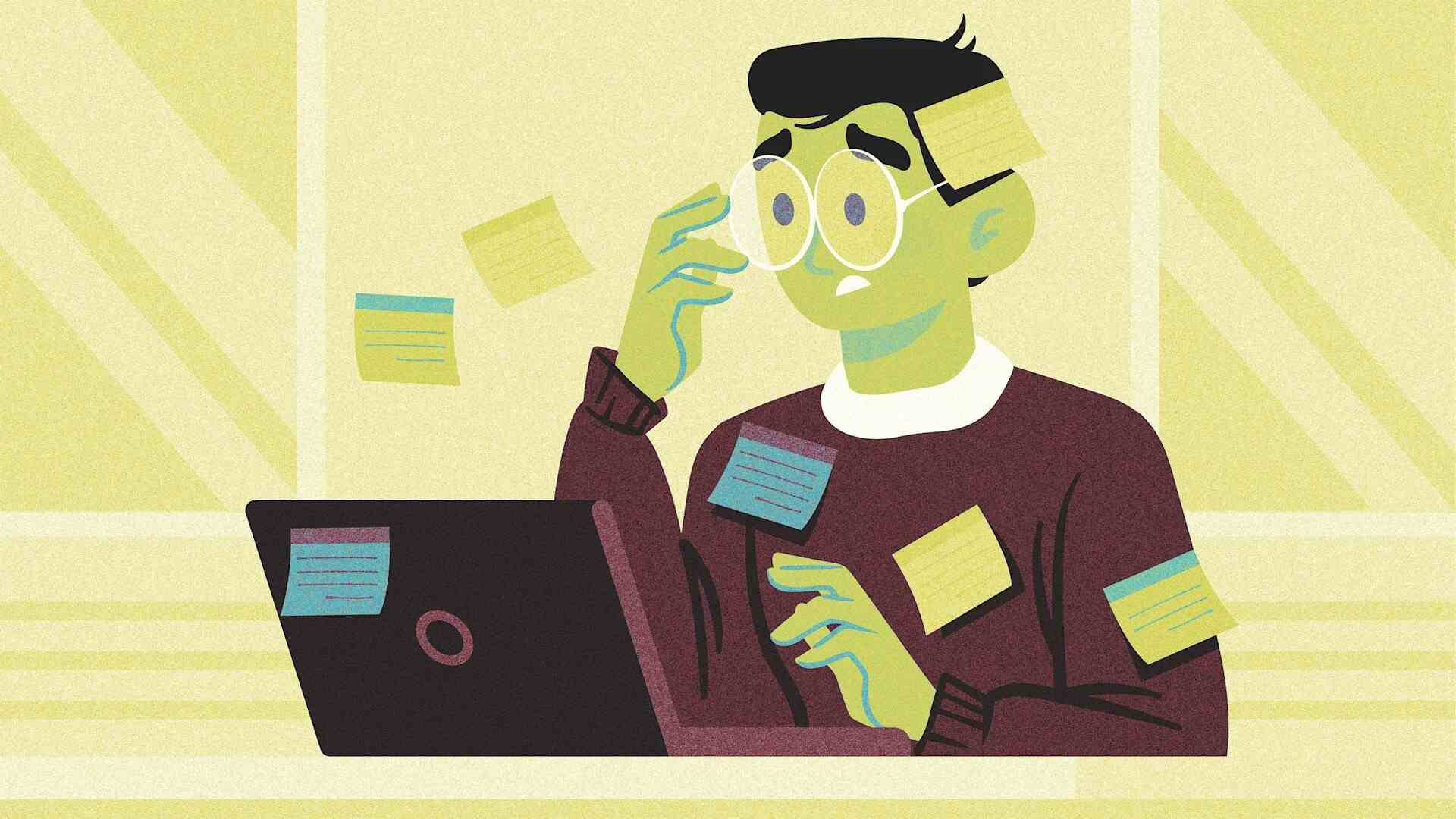- | 9:00 am
How to work more efficiently, according a neuroscientist
In her new book, neuroscience researcher Mithu Storoni breaks down how to best structure your work sessions and increase your productivity.

In an essay published in The Economist in 1955, British historian Cyril Northcote Parkinson noted how work often “expands so as to fill the time available for its completion.” Writing a few lines on a postcard, he observed, can take an entire day if one has the entire day to write it in. Various factors, from perfectionism to procrastination and laziness to lassitude, contribute to this phenomenon, which has come to be known as Parkinson’s Law. When it applies to why you don’t get more done by working for three hours straight than by working for two, however, Parkinson’s Law may be explained by the rhythmic cycle of your mind.
Your brain swings itself like a pendulum across different states while you sleep. Every ninety minutes or so, you cycle between deep, dreamless sleep, when your mind is motionless but your body is not, and dream-filled REM sleep, when your body is motionless but your mind is not. In the 1960s, American physiologist Nathaniel Kleitman and others speculated that this ninety-minute pendulum is also in motion while you are awake, driving you through subtly rising and falling states of alertness. Kleitman called this cycle the basic rest-activity cycle, or BRAC, and surmised that the cycle is barely perceptible in a healthy person because it is easy to override.
Working on something continuously without a break for more than about ninety minutes feels tiring for most of us. When people resume intense mental work after taking a refreshing break, they stay alert and focused for about ninety minutes before returning to the same state of fatigue as before they took the break. As mental tiredness kicks in, your mind drifts and your performance starts to sink, but your brain tries to compensate for its waning performance. A Florida-based research team has identified at least one brain region that may be involved in this compensatory mechanism, it swings into action when other brain regions start to slow down.
We appear to have designed certain features of our lifestyles with an almost intuitive assumption that attention wanes in ninety-minute cycles. Early Hollywood films were often cut at the ninety-minute mark, resulting in American audiences viewing a heavily truncated version of Fritz Lang’s 1927 masterpiece, Metropolis. Football and rugby matches are approximately ninety-minutes long. Play breaks at many schools bifurcate the mornings and afternoons into roughly ninety-minute segments, as do tea and coffee breaks in workplaces. In a 2003 paper, Poland-based researchers conjectured that a ninety-minute rhythm is wired into our brains to protect the mind from information overload and give it a chance, at regular intervals, to wander and process what it has imbibed.
How to structure a work session
Tying these threads together, it would make sense to schedule work sessions that are around ninety minutes long, though this timing can be modified depending on how tired you feel, the time of day, and the kind of work you are doing. (If you are working later in the day with depleted mental resources, a sixty-minute session may be better.) By the time you hit the end of your session, your mind may already be drifting as it winds down to catch its breath. This is the time for you to take a break and recharge.
Because your mind is freshest at the start of each session, you could aim to do 80 percent of the most complex, mentally demanding work in the first 20 percent of your sixty-to-ninety-minute work session, and the least demanding work in the latter part of each session. If you have multiple tasks to get done during a single session, it helps to rank them from taxing to easy and do them in order. If your hardest task takes longer than about twenty minutes and you find your pace starting to sag, it might help to put it aside until the start of your next work session, when your mind is refreshed.
On this basis, each work session would look something like this:

Presented by City of Hope
The prize, one of the largest privately funded awards for scientific investigation, will be given to the world’s top researchers, regardless of institutional affiliation
- Perform the hardest tasks in the first twenty minutes.
- Do slower, easier work for the remaining forty to seventy minutes.
- Take a break for ten minutes.
- Repeat.
In general, you should limit intense mental work to no more than four hours a day in total. When you work intensely for longer, your mind is left so tired that it cannot recover after a night of rest and your fatigue is carried over into the next day, adding to that day’s load.
Pure, creative work needs a different approach—it is best done without any limits or structure. If your mind is deep in creative ideation, then imposing a strict schedule can interrupt its thinking. Take the example of KR and ST: KR, an engineer in an advertising firm, uses the “pomodoro technique” to remind himself to stop for a break every sixty minutes, and a tomato-shaped kitchen-timer-like clock buzzes to tell him when his break is due. His colleague, ST, sits on the workstation next to him and designs user interfaces. ST relies on creative thinking, and his mind needs to be in a low-energy state to keep churning out ideas. As he watches KR’s clock, ST gets an uneasy feeling of time rushing by. When the alarm rings at the end of each cycle, ST’s mental gear shoots up and his mind snaps out of its creative galaxy. Any a-ha! moment he was about to experience is immediately decimated.
Regardless of the type of work you are doing or how you structure your work sessions, the important feature is the waxing and waning, the power law-like pattern of working. This approach can be stretched macroscopically, too. When you have a really intense day at work, sandwich it with a couple of light days. If you are a manager, structuring projects this way can help protect your team from burnout.
Excerpted with permission from HYPEREFFICIENT: Optimize Your Brain to Transform the Way You Work (Little, Brown Spark).







































